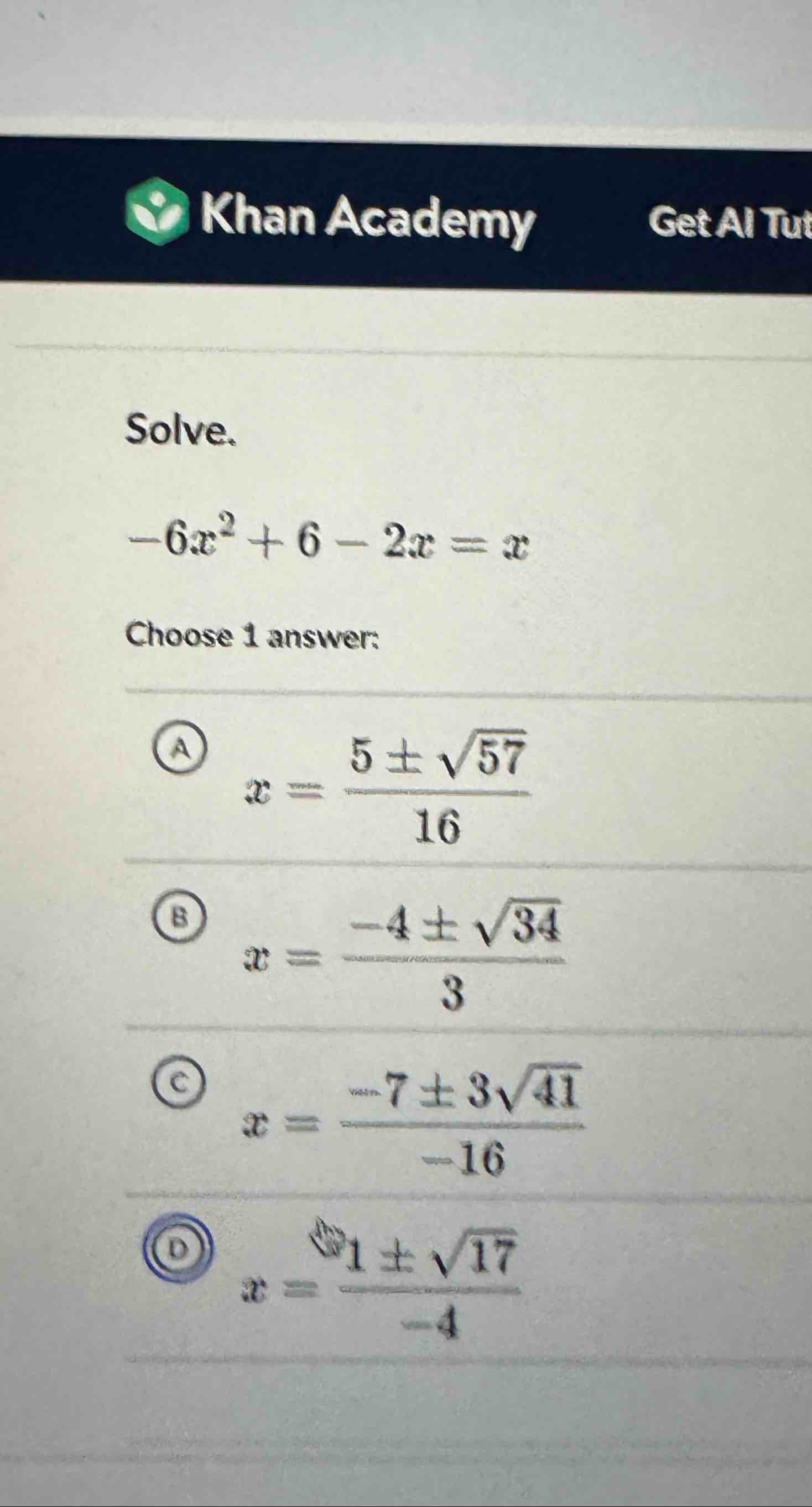AI tutor
Full solution
Q. Solve.Choose answer:(A) (B) (C) (D)
- Bring terms together: First, we need to bring all terms to one side of the equation to set it equal to zero. We do this by subtracting from both sides of the equation.This simplifies to:
- Solve quadratic equation: Next, we need to solve the quadratic equation. We can do this by using the quadratic formula, which is , where , , and are the coefficients from the quadratic equation . In our case, , , and .
- Plug values into formula: Now we will plug the values of , , and into the quadratic formula.This simplifies to:
- Simplify square root: We simplify to get the exact values for . is not a perfect square, so we leave it as is.
- Divide by common divisor: We can simplify the fraction by dividing the numerator and the denominator by their greatest common divisor, which is in this case.Since is not a simplifiable square root, we leave it as is.
- Match with answer choice: Now we look at the answer choices to see which one matches our result. We notice that is the same as , which simplifies to . So our equation becomes:This matches answer choice (D).

